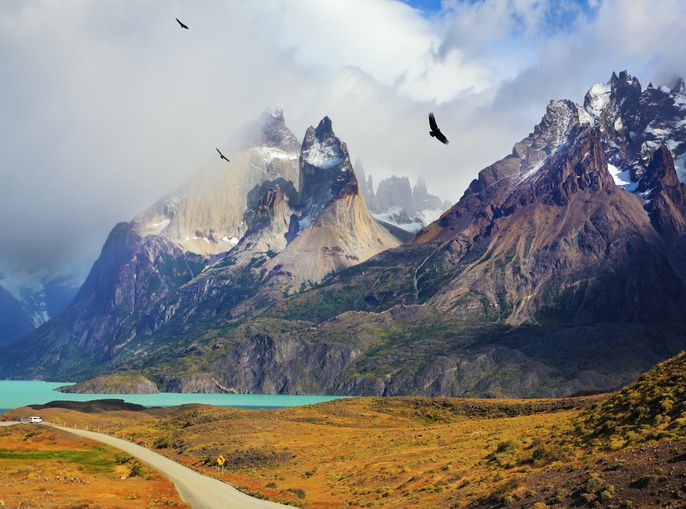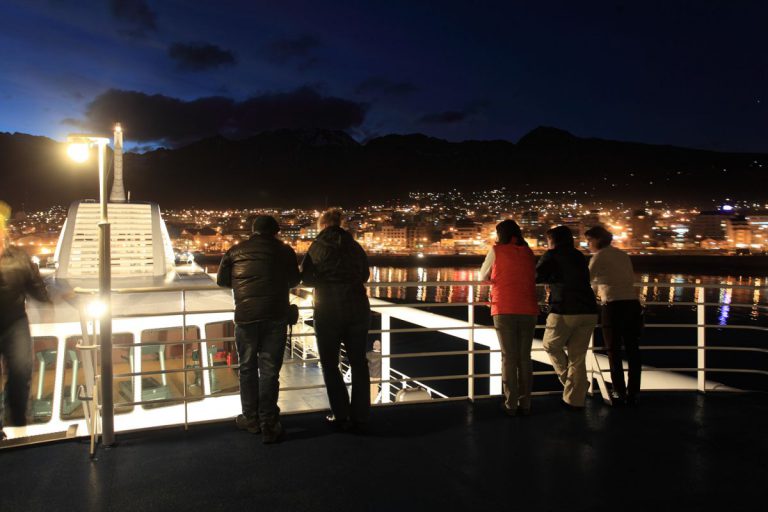Located on Isla Hornos, part of Chile’s Tierra del Fuego archipelago, the Cape Horn Lighthouse overlooks the clipper route that connected New Zealand to Europe. This spot has claimed the record for most ships lost at sea: over 800 of them have foundered and sank while trying to round the cape. From the 15th to the 20th century, more than 10,000 sailors have drowned as a result, far away from any rescue.. This makes this area the largest underwater cemetery in the world.
The lighthouse itself is a striking structure, with a cylindrical cast iron tower painted in white and red stripes, manned by the Chilean navy personnel who also maintain a meteorological station there. Despite the opening of the Panama Canal, which significantly reduced the need for ships to navigate around the Horn, the lighthouse remains an important beacon for ships that still pass through these waters.
A Beacon in the Storm
Cape Horn has a fearsome reputation among mariners, as the combination of strong westerly winds, massive waves, and a sharp rise in the ocean floor near the Horn creates perilous conditions for navigation.
And if this weren’t enough, the island is covered in unexploded ordnance, as the Chileans covered it with land mines during the 1978 Beagle Conflict. In 2006, a project was started to remove these traps. However, there are plenty of mines “unaccounted for” on the islands surrounding it.
The Cape Horn Lighthouse, operational since 1991, serves as a vital navigational aid in this challenging environment. Managed by the Chilean Navy, the Cape Horn Lighthouse and its adjoining weather station are staffed by a family who tend to the beacon and maintain weather monitoring equipment. Operating the Cape Horn Lighthouse in the icy Antarctic winds comes with unique job requirements. The role of “lighthouse keeper at the end of the world” is not for the faint-hearted.
Details about the position
Firstly, only members of the Chilean navy are eligible for this position due to its strategic importance. This role requires vigilance and dedication, as it plays a crucial part in maritime safety.
Secondly, the position is exclusively offered to married men with families. Given the extreme isolation, it was deemed essential that the keeper has company beyond the occasional albatross. The presence of family provides much-needed companionship in such a remote and challenging environment.
Interestingly, the role is voluntary, but applicants cannot choose their lighthouse assignment. The navy selects the Chilean Lighthouse family, rotating them every 12 months. Supplies are restocked every 60 days, weather permitting. However, extreme winds often delay deliveries by up to a week. Attempts to grow food in a greenhouse failed due to the harsh conditions, despite the excellent soil on the island.
The radio mast and weather station frequently suffer from the severe weather, leading to communication blackouts that can last for days. Despite modern advancements, Cape Horn remains a wild and dangerous place, testing the resilience of its lighthouse keepers.
Getting to the Cape Horn Lighthouse: The Journey of a Lifetime
Reaching Cape Horn is an adventure in itself. The island can be accessed via sea or air, though both options are subject to the whims of the weather.
By Sea: Many travelers opt to visit Cape Horn as part of a cruise through the southern Patagonian fjords. These cruises often depart from Ushuaia, Argentina, the southernmost city in the world. The voyage offers spectacular views of glaciers, wildlife, and rugged landscapes before arriving at the fabled Cape.
By Air: For those preferring to stay on land, scenic flights over Cape Horn are available from Punta Arenas, providing a breathtaking aerial view of the lighthouse and its rugged surroundings.
The Cape Horn Lighthouse has become a tourist attraction
The lighthouse itself is a modest structure, standing resiliently against the elements. Nearby, a simple chapel and a monument honoring the sailors who perished in these waters add to the poignant atmosphere.
A visit to the lighthouse is an opportunity to experience one of the most isolated places on earth. The resident lighthouse keeper often welcomes visitors, providing insights into the daily life of those who live at the edge of the world. There’s even a small part of the house for visiting dignitaries and members of the navy to stay over on the island.
Practical Tips
Prepare for the Weather: The weather at Cape Horn is highly unpredictable. Strong winds, rain, and even snow can occur at any time of year. Dress in layers and bring waterproof gear to stay comfortable.
Respect the Environment: Cape Horn is a fragile ecosystem. Ensure you leave no trace and follow local guidelines to protect the natural environment.
Plan Ahead: Given the remote location, it’s crucial to plan your trip carefully. Ensure you have all necessary permits and arrangements in place before setting out.
Conclusion
A visit to Cape Horn Lighthouse is more than just a trip; it’s a journey to one of the most remote and storied places on Earth. For travelers and backpackers seeking an extraordinary adventure, the lighthouse offers a rare glimpse into the raw power of nature and the indomitable spirit of human exploration.
No comments yet
There are no comments on this post yet.




Leave a comment